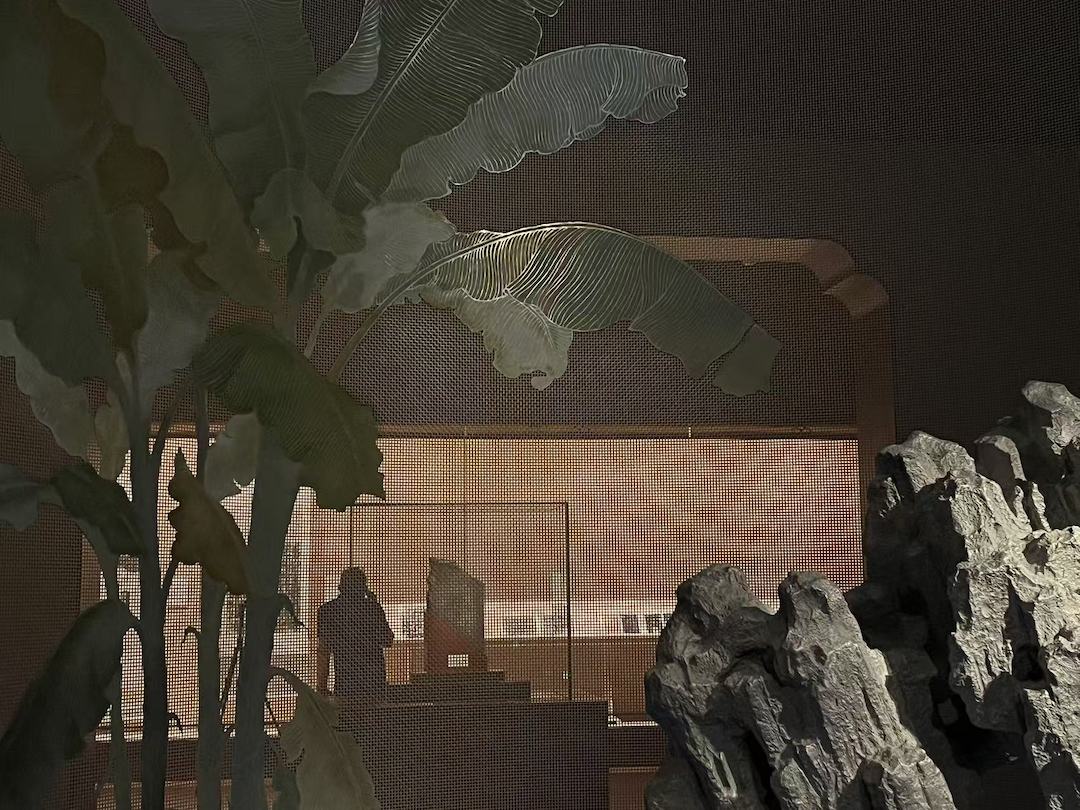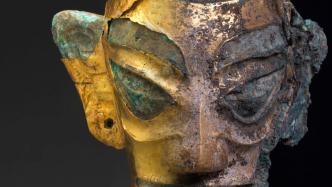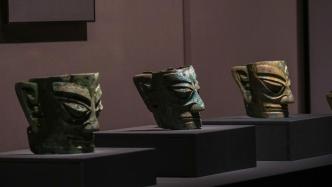
As the first special exhibition of the opening of the East Building of the Shanghai Museum, "Star of China: Sanxingdui·Jinsha Ancient Shu Civilization Exhibition" is on display in the East Building of the Shanghai Museum. The exhibition brings together 363 pieces/sets of important ancient Shu cultural relics from 28 cultural, museum and archaeological units across the country, revealing the appearance and connotation of ancient Shu civilization to the public through the three major themes of "Heavenly Road", "Topography and Kunwu" and "Humanity and Mingde" , characteristics and ins and outs. About one-third of the exhibits are the latest archaeological discoveries, such as bronze human heads with gold masks and hair, bronze pig-nosed dragons, bronze human figures with vertical hair, large bronze masks, bronze long-haired kneeling figures, bronze mythical beasts, etc.
Appreciation of some important cultural relics in the special selection of "The Paper: Ancient Art".
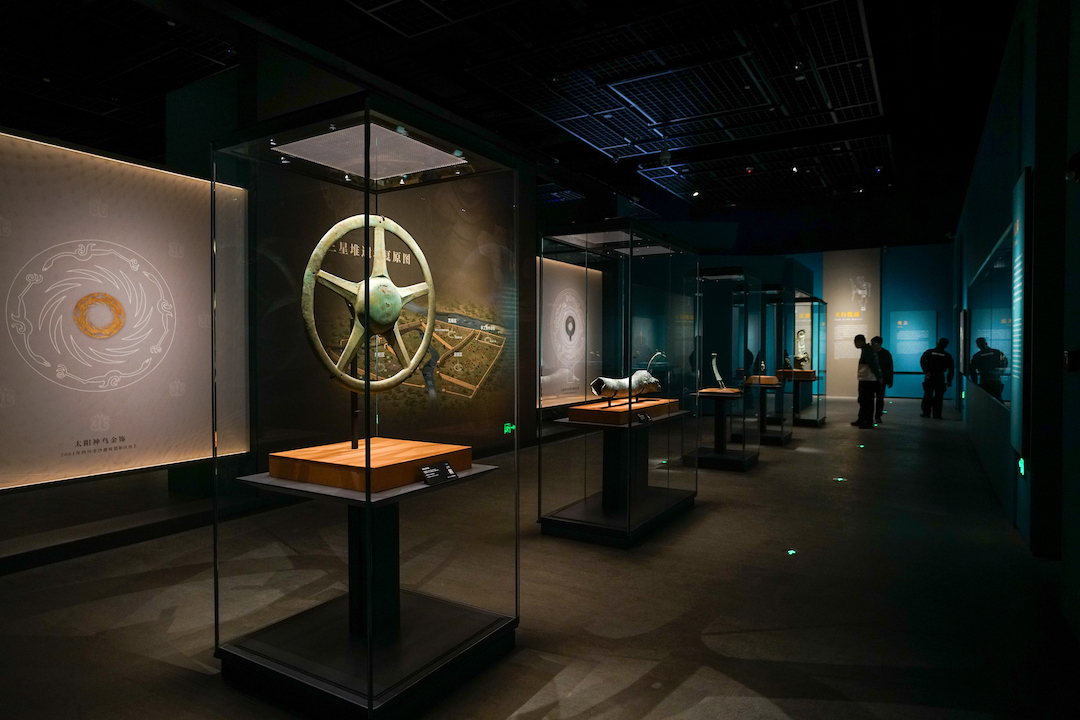
exhibition site
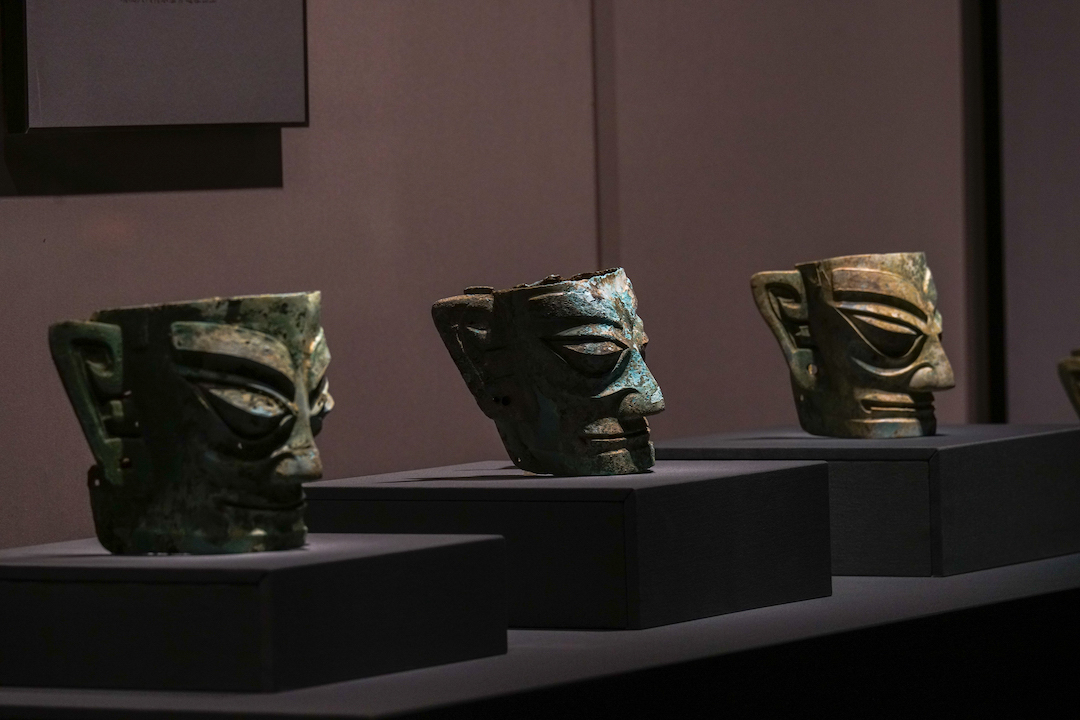
exhibition site

Bronze human head with golden mask and hairpins, unearthed from Sacrificial Pit No. 8 at the Sanxingdui site in Guanghan, Sichuan in 2021 in the late Shang Dynasty (13th century BC - 1046 BC). Collection of the Sichuan Provincial Institute of Cultural Relics and Archaeology
A gold mask is attached to the face, exposing eyebrows and eyes. The hair is domed, and the hair seems to be combed from back to front, with the ends of the hair tucked into the mask. There is a square hole at the back of the head, which looks like a hairpin, and the hairline is clearly visible. There are triangular decorations above the ears on both sides of the forehead, and there are two unclosed ridges around the top, which are connected to the triangular decorations above the ears. The eyebrows are pointed, the tail of the eyebrow is slanted, and the eyebrow is lower than the tail of the eyebrow. The eyes are erect, the upper eyelids are slightly upwardly curved, the lower eyelids are significantly convex, and the outer canthus is higher than the inner canthus. The nose bridge is high and straight, with a garlic nose and two nostrils forming an "M" shape. The wide mouth is slightly open, the corners of the mouth are downwardly curved, and the slit of the mouth is slightly downwardly curved. Long ears, with pierced earlobes on both ears. The lower end of the neck is mutilated.
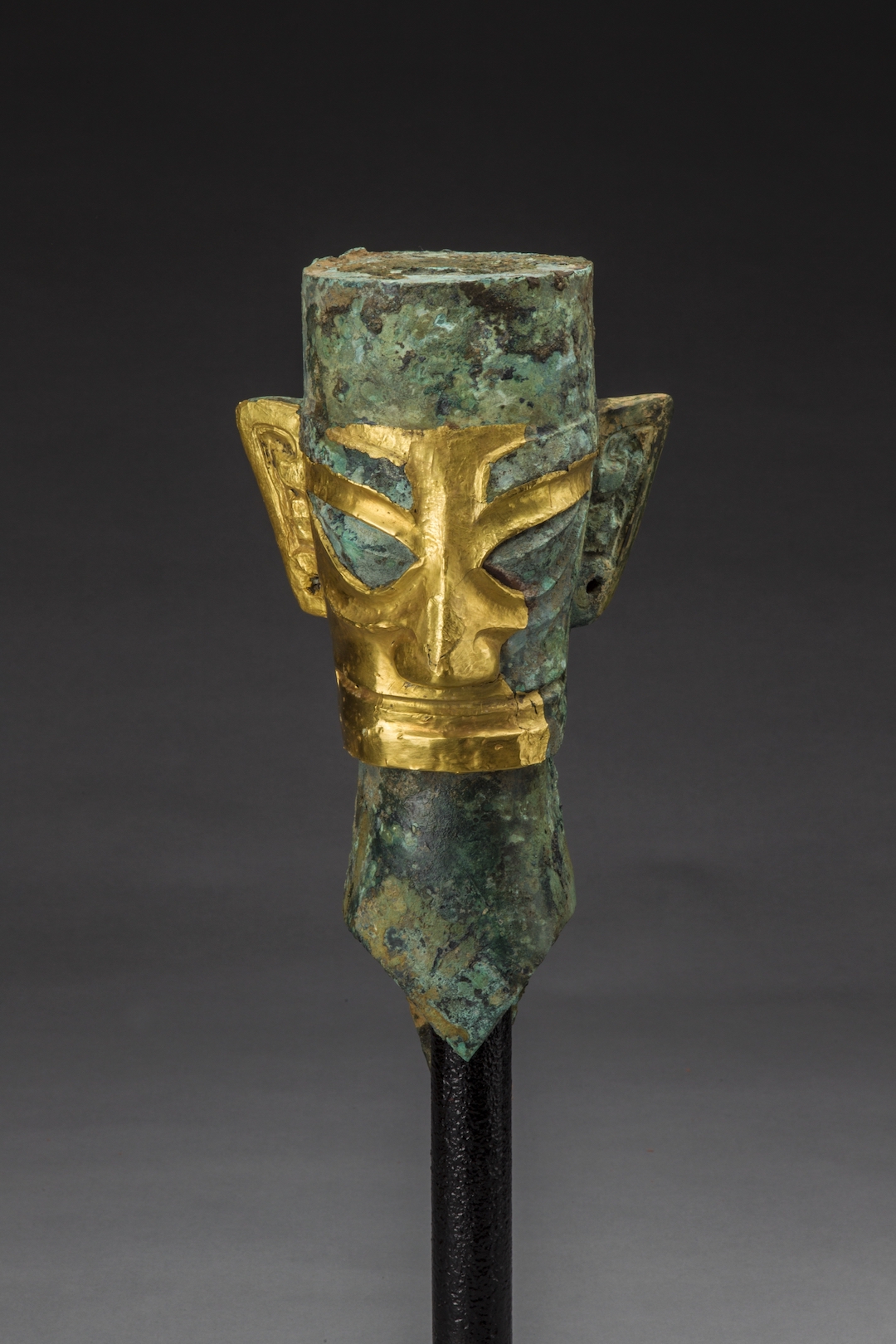
Bronze human head with gold mask and braided hair. Late Shang Dynasty (13th century BC - 1046 BC). Head: longitudinal diameter 13.8 cm and transverse diameter 12.0 cm. Unearthed in 1986 at the No. 2 Sacrificial Pit of the Sanxingdui Site in Guanghan, Sichuan. Collection of the Sanxingdui Museum in Guanghan, Sichuan.
This gold-faced bronze figure has a characteristic head shape with a flat top. The upper edge of the gold mask reaches the tip of the eyebrow, and the right side is incomplete. The gold mask was originally thought to be a complete form, but its incompleteness may have been caused by the sacrificial process before the figure was put into the pit. Because of its extremely thin texture, it may also have been damaged due to wear or natural falling off when it was buried in the pit. The portrait has a high forehead, and the hair is combed and braided on the back of the head. The image is solemn and mysterious.
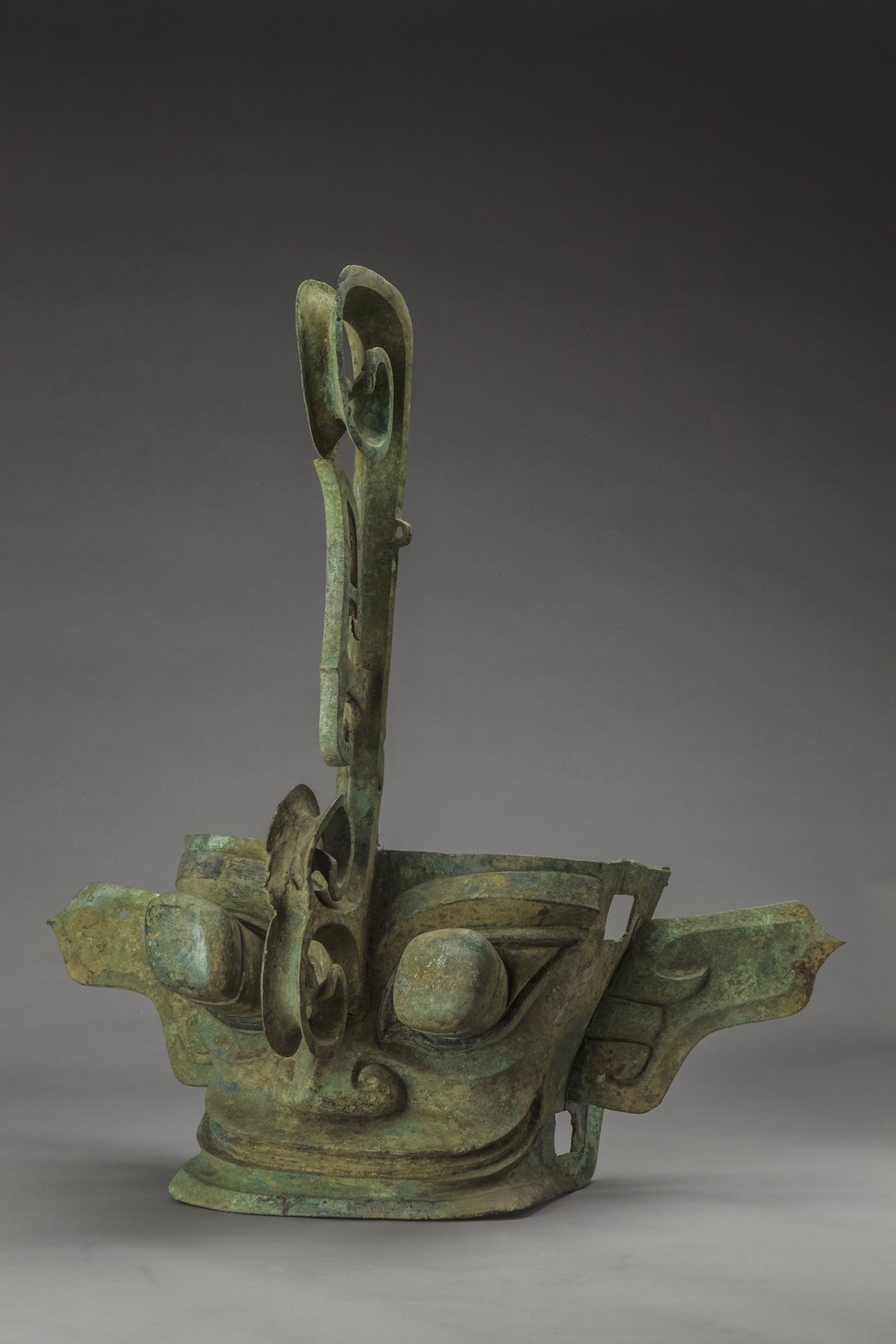
Bronze mask with dragon crown and long eyes, late Shang Dynasty (13th century BC - 1046 BC), unearthed in 1986 at the No. 2 Sacrificial Pit at the Sanxingdui site in Guanghan, Sichuan, collected by the Sanxingdui Museum in Guanghan, Sichuan
The eyes of the mask are cylindrical and convex, extending forward about 10.0 centimeters. The ears are fully spread out to both sides, and a Kui dragon-shaped forehead ornament about 70 centimeters high is cast on the forehead. The cross-section of the mask is "U" shaped, and the eyes and ears are cast by inlay casting. The Kuilong-shaped forehead ornament on the forehead is recast. This casting method is to cast the body of the vessel first, and then recast the accessories.
When the mask was unearthed, the eyes and eyebrows were painted with dark colors, and the lips were painted with cinnabar. Its overall shape is mysterious and treacherous, its style is majestic and gorgeous, and it is quite special among various figures in Sanxingdui. It is generally believed that the eyes of the mask roughly conform to the records in the history books about the "long eyes" of Cancong, the ancestor of the Shu people. Some people also think that "Zongmu" should mean "upright eye", which is like the eyes in the forehead of the ancient Chinese mythological figure Erlang God, whose image may be the statue of the ancestor god. Or, in connection with the shape of the Kui dragon-shaped forehead ornament, it is believed to be related to the mythical god Zhulong who has a "human head and a dragon (snake) body" and "straight eyes and right riding".

Bronze chicken unearthed from the No. 2 sacrificial pit at the Sanxingdui site in Guanghan, Sichuan in 1986 in the late Shang Dynasty (13th century BC - 1046 BC). Collection of the Sanxingdui Museum in Guanghan, Sichuan
Many of the statues of gods unearthed in Sanxingdui are very mysterious and treacherous, and their modeling methods often use exaggerated and surreal expressions. Only this bronze chicken can be called a masterpiece of realistic style.
The bronze chicken is cast using the Fan casting method. It has plump tail feathers, its neck is raised and its head is raised. It is majestic and full of energy. Its crown, eyes, beak, claws, feathers, etc. are meticulously carved, showing both spirit and form. The overall sculpture is rigorous yet agile, reflecting a majestic and elegant style. It can be called a rare artistic masterpiece.
This bronze chicken is not an ordinary poultry, but has a deeper symbolic meaning. Perhaps it represents the "Celestial Chicken" and "Sacred Chicken" in ancient myths and legends. As the saying goes, "the rooster sings and the world becomes white." This rooster The shape of the chicken has the implication of singing loudly, calling for the sunrise, and bringing infinite light to the world.

Bronze Hognosaurus unearthed from Sacrificial Pit No. 8 at the Sanxingdui Site in Guanghan, Sichuan in 2021 in the late Shang Dynasty (13th century BC - 1046 BC). Collection of the Sichuan Provincial Institute of Cultural Relics and Archaeology
The whole is cylindrical. The front end of the snout is relatively flat and protrudes forward. The cross section is rectangular with rounded corners, and is surrounded by a circle of perforated Yazhang patterns and incised string patterns. There are three circular perforations on the upper end of the snout (one at the Yazhang pattern, and two between the incised string patterns, of which drilling marks can be seen in the left perforation), and the two lower perforations are located at the Yazhang pattern. The head is covered with scales, and there is a horn in the middle of the forehead, which is flat and broken at the front. The eyes are shaped like "chen", with protruding eyeballs. The center of the lower jaw is decorated with a sacred tree pattern, and both sides are decorated with grid-like patterns (suspected to be teeth). The ears are curved forward in the shape of a sickle. The left ear is broken off from the root, and the white soil inside can be seen. The head is separated from the body by a circular broad band, and there is a rounded triangular pattern on both sides of the broad band. The sides of the body are decorated with knife-shaped feather patterns, and the underbelly is decorated with wavy patterns. The feather pattern on the tail is slightly different, with one branch branching into a hook shape, and another ring-shaped broad band pattern. The tail ends in a wavy shape with three circular perforations.

Bronze sun-shaped vessel unearthed in the late Shang Dynasty (13th century BC - 1046 BC) at the No. 2 sacrificial pit at the Sanxingdui site in Guanghan, Sichuan in 1986. Collection of the Sanxingdui Museum in Guanghan, Sichuan
All the "sun-shaped objects" unearthed in Sanxingdui were smashed and burned. Six individuals can be identified from the remains. The diameter of the two restored sun-shaped vessels is about 85.0 cm, and their configurations are exactly the same. Here is one of them.
The shape of the utensil is round, with a convex yang in the middle, and the five awns around it are arranged in a radial shape, with the awns connected to the outer halo. The central round hole on the male part and the five equally spaced round holes on the halo are used for installation and fixation. The utensils are made using the secondary casting method. After the halo and five awning strips are cast, the sun is embedded in the awning strips using the inlay casting method, and then holes are drilled on both sides at the joint with the halo. Finally, molten copper is poured into the holes using the riveting casting method. The awnings are riveted firmly.
This kind of shaped object has never been seen in previous unearthed cultural relics, because it is similar to the "sunray pattern" on the roof of the copper temple unearthed in the same pit. The structure of the eyeballs is similar, and the overall image characteristics are quite similar to the rock paintings of the hanging coffin tombs of the Bo people in Gong County, Sichuan and the sun symbols on the bronze drums unearthed in southern China, so the excavators named it "sun-shaped vessel". However, some researchers believe that the formal composition of this device is not a symbol of the sun, but a wheel: the central part is the hub, the radial strips are the spokes, and the outer ring is the rim. There is also a view that it is neither a sun nor a wheel, but a shield on a shield used in military operations. Most opinions believe that this shape of utensils should be "sun-shaped utensils". It is an artifact permanently installed in the temples of the ancient Shu Kingdom, or used in sacrificial rituals. It is hung on some object and accepted as a symbol of the sun to be worshiped by people. The large number of various sun patterns on many heavy objects unearthed from the Sanxingdui sacrificial pit, such as the bronze Dali Ren, the bronze sacred tree and other heavy bronze objects, show that "sun worship" was quite prominent in the religious culture of the ancient Shu Kingdom in Sanxingdui. It can be inferred that the ancient Shu Kingdom in the Shang Dynasty had a special ritual for worshiping the sun, and it should have played a decisive role in the many rituals of the ancient Shu Kingdom.
As a belief custom of the ancient people in the Chengdu Plain, "sun worship" extended to the Eastern Zhou Dynasty. According to "Huayang Guozhi", the title of the last Shu royal family was "Kaiming". It is generally believed that the meaning of "Kaiming" is closely related to "the rising of the sun". For example, "Chu Ci Tianwen" said, "Why is it so dark when it is closed? Why is it so dark?" Is it open and bright? Before Spica is over, the shining spirit is hidden." This is circumstantial evidence. The golden four-bird sun-circling ornaments and bronze standing human figures unearthed from the Jinsha site are physical examples of the worship of the sun (sun god) in ancient Shu from the late Shang Dynasty to the early Western Zhou Dynasty. As materialized forms of religious concepts, they are connected with similar artifacts in Sanxingdui, providing an important basis for further research on ancient Shu religious culture.

Bronze climbing dragon scepter unearthed from the No. 1 sacrificial pit at the Sanxingdui site in Guanghan, Sichuan in 1986 in the late Shang Dynasty (13th century BC - 1046 BC). Collection of the Sanxingdui Museum in Guanghan, Sichuan
The cross-section of the column is oval, the top of the column is inclined and flat, there are semicircular notches on all sides of the lower end, and there is a circular perforation on the opposite top of the notch. There is a dragon on the top of the pillar, with a pair of large sickle-shaped ears on its head and a pair of horns on the inside of the ears. The dragon's mouth is wide open, its teeth are grinning, its two front paws are lying on the top of the pillar, its body and tail are hanging down and attached to the side of the pillar, its hind paws are tightly grasping the sides of the pillar, and its tail is curled up. On the other side of the column wall corresponding to the dragon, there is a simplified Kui-shaped decoration with the head downward. This device may be an accessory to some kind of device.
Judging from the head of this dragon, it looks like a goat and has a long beard, so some people think it should be named the God Sheep. Its elongated body resembles a lizard.
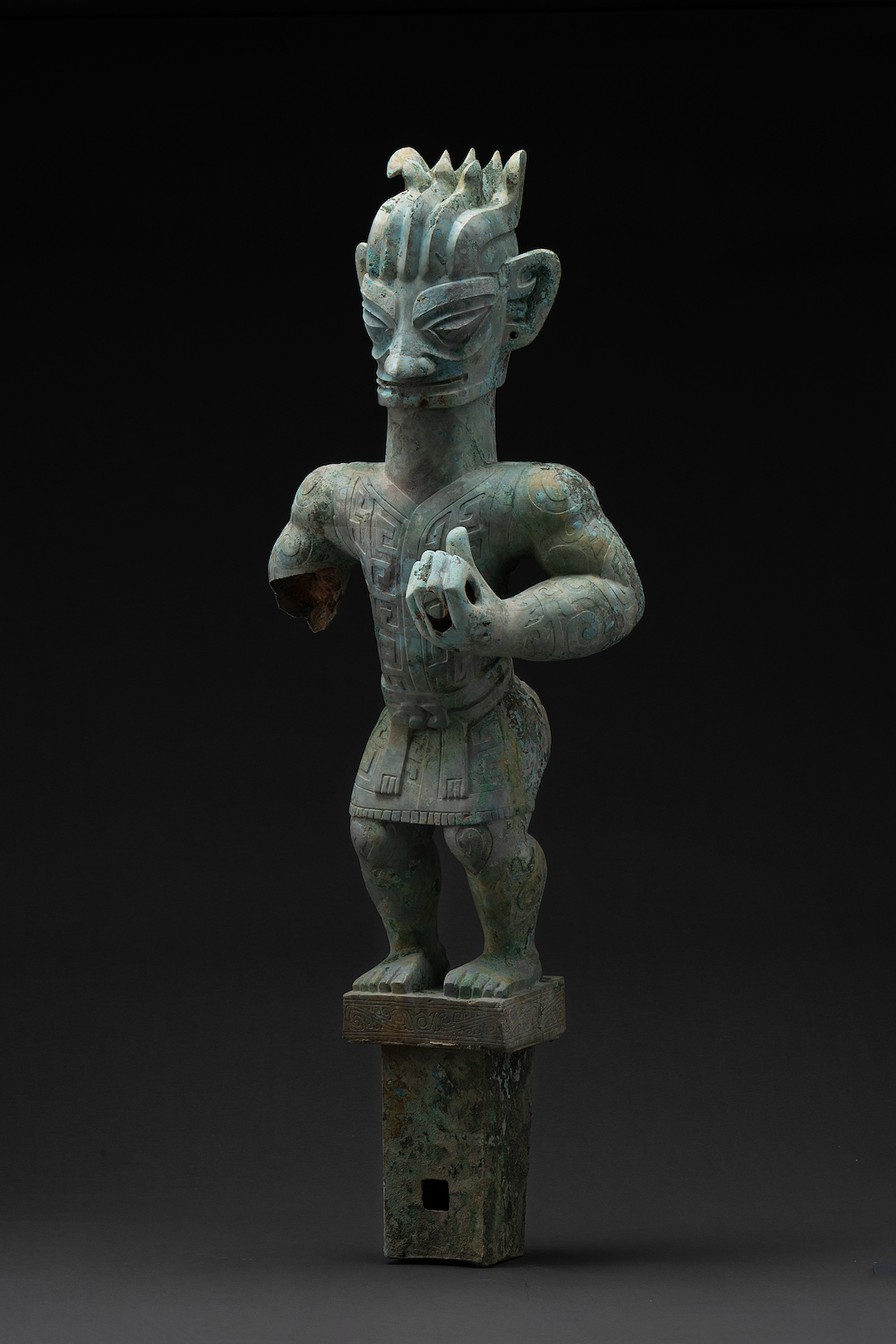
Bronze figure with vertical hair, unearthed from Sacrificial Pit No. 8 at the Sanxingdui site in Guanghan, Sichuan in 2021 in the late Shang Dynasty (13th century BC - 1046 BC). Collection of the Sichuan Provincial Institute of Cultural Relics and Archaeology
The hair is spread vertically and divided into three strands, one part is curled on the top of the head, and the other part is curled up towards the back and tail end. In addition, the vertical hair on both sides goes up directly to the back of the head, and the tail ends are curled upward. There are five groups of vertical hair on the back of the head, with the tail ends protruding backward. He has thick eyebrows and big eyes, a high nose bridge, "M" shaped nostrils, downward-facing mouth corners, big ears, round holes on both sides, and a slender neck. The left arm is raised as a fist, holding a streamer in the hand, with the thumb upward and the little finger outward in the shape of an orchid finger, raised flat to the waist. The right arm is intact from the elbow. Wear a sleeveless knee-length skirt with a right hem and a belt at the waist. Lift your hips back and bend your knees into a half-squat position. Stand barefoot on the square seat. The square seat can be divided into two parts. The upper part is rectangular with four sides, and the upper and lower parts are nearly square. The lower part is narrower than the upper part. The four sides are rectangular, and the upper and lower cross-sections are nearly square. There is a square hole in the middle of the front and rear sides. There are peach-shaped decorations where the Liren's knees connect to the skirt, and eye-shaped decorations on the outside of the two calves. The upper part of the square seat is decorated with cloud patterns. The two groups of cloud patterns on the front are symmetrical, and the two groups on the left and right are parallel, each with a standard line. The lower part is plain.
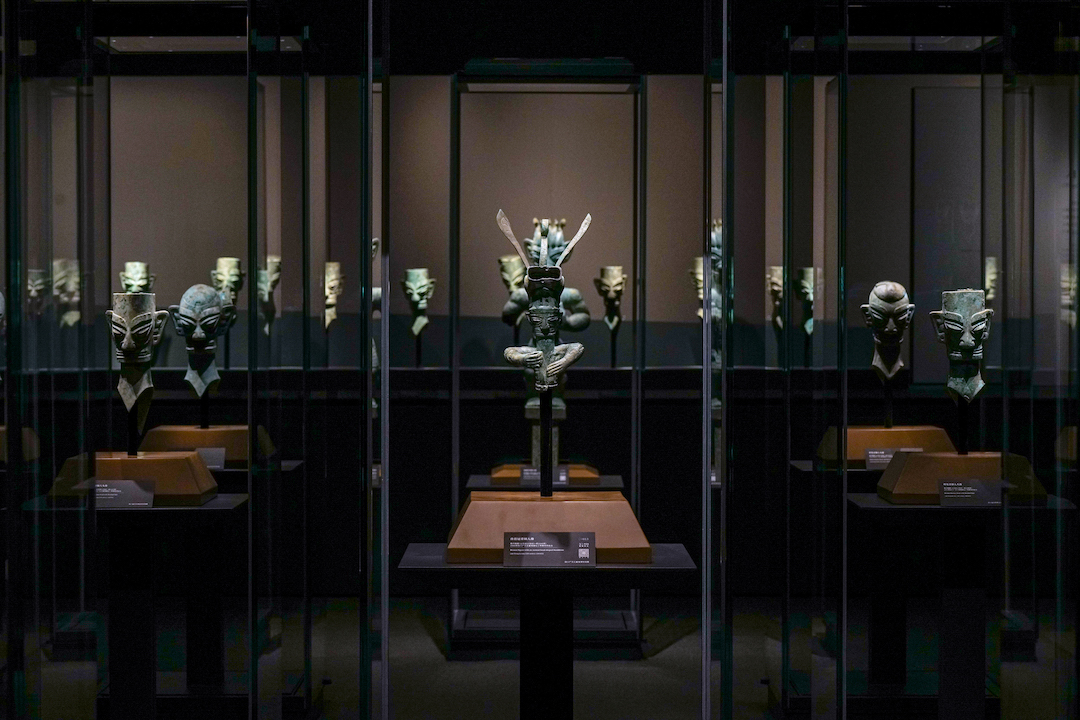
exhibition site

Bronze human figure with an animal head crown, unearthed from the No. 2 sacrificial pit at the Sanxingdui site in Guanghan, Sichuan in 1986 in the late Shang Dynasty (13th century BC - 1046 BC). Collection of the Sanxingdui Museum in Guanghan, Sichuan
Only the upper body of the figure remains, and it is estimated that it was deliberately set on fire and smashed during some religious ceremony before entering the pit. The figure is dignified, with a cold and solemn expression. The arms are folded in front of the chest, and both hands are in the shape of holding hollow hands. The double-breasted coat he wears is beautifully decorated, and the belt is tied around the waist. The entire configuration and the use of clothing symbol elements strive to express the majestic temperament of the portrait and the mysterious splendor of the dress. It is speculated that this figure should represent the image of a person who presides over some kind of ritual, and the clothes he wears should be cassocks. Overall, the shape and gestures of the portrait are similar to those of the Dali portrait. The slight change in the gesture is that the thumb of the right hand is not clasped with the other four fingers, and the little finger is slightly tilted outwards. The form means that it is similar to that of later Taoism. The "Twisting Technique" of the spell is quite similar. Judging from the shape of the hand, it seems that the original hand held a ritual vessel called a "cong", which is square on the outside and round on the inside.
The most eye-catching thing about the statue is its unique animal head crown. The beast's head crown is high-spirited and the beast's mouth is wide and flat, with a sun pattern on each side of the mouth. There are animal eyes on both sides of the crown, a straight animal nose is cast in the middle of the crown, and animal ears are cast on both sides of the back of the crown to spread out. The animal head is strange and incomprehensible. It is obviously a composite image of a mythical beast that combines the local characteristics of multiple animals. Judging from the modeling characteristics of the animal's nose and ears, it must be an imitation of an elephant's trunk and ears using imagery techniques. A large amount of ivory was unearthed from Sanxingdui Sacrificial Pit, and a jade jade unearthed from Pit No. 2 was also engraved with an image of ivory as a sacrificial object, which reflects the ancient Shu people's worship of elephants. From this point of view, it is completely reasonable to extract the morphological characteristics of the elephant as the main form component of the animal head crown.
The ancients valued crowns, which had the significance of identifying status. The differences in head crown, size, etc. between the animal-headed human figure and the large-standing human figure also reflect the difference in the scope of duties and power between the two.

Bronze plaque inlaid with turquoise animal masks, unearthed from the Cangbaobao sacrificial pit at the Sanxingdui site in Guanghan, Sichuan in 1987 during the late Xia Dynasty (18th century BC - 16th century BC). Collection of the Sanxingdui Museum, Guanghan, Sichuan
The plane is rectangular, the body is thin, and it is slightly arched like a tile. The upper edge is straight, the lower edge is slightly curved, and the surface of the vessel is engraved with a relief pattern of deformed branches. The main trunk surrounds the surface of the vessel and is connected to the branches in the middle. There are three layers of fruit branches symmetrically sloping out on both sides of the central branch, connected to the surrounding branches. There are twelve leaf buds and four round fruit-like fruits on the sides of the branches. The ornaments are interspersed with turquoise fragments inlaid in the gaps. There are semicircular buttons on the upper and lower edges of both sides of the bronze medal for easy fixing. There are traces of bamboo weaving prints on the patina on the back.
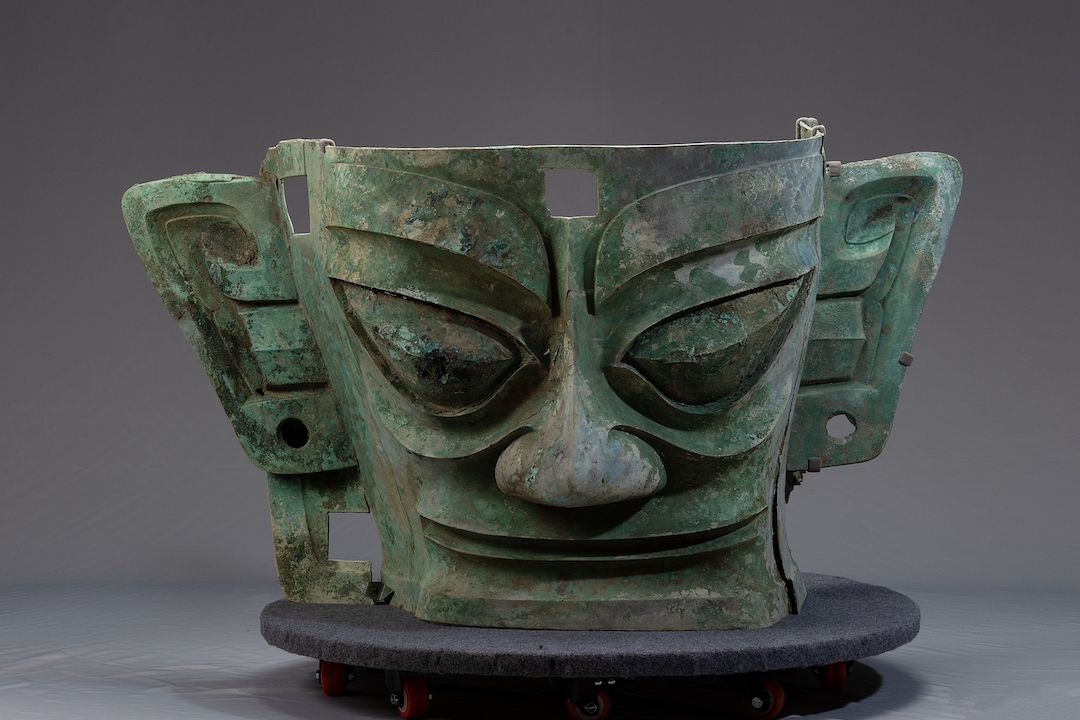
Large bronze mask unearthed from the No. 3 sacrificial pit at the Sanxingdui site in Guanghan, Sichuan in 2021 in the late Shang Dynasty (13th century BC - 1046 BC). Collection of the Sichuan Provincial Institute of Cultural Relics and Archeology
The preservation is relatively complete. His face is exaggerated, with sharp edges and smooth lines. Broad-faced, wide forehead, thick raised eyebrows, garlic nose, wide mouth, long ears, wider auricles, and a round hole in the earlobe. There are square holes on the upper and lower sides of the mask and in the middle of the forehead, which may be used for fixation.
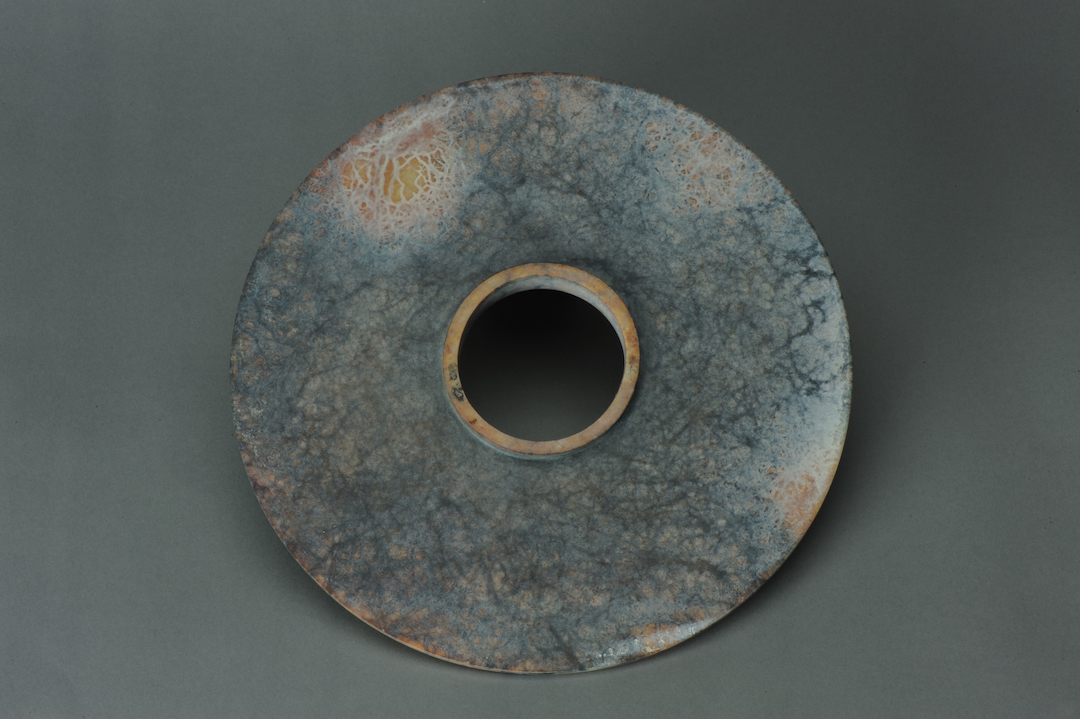
Collared jade, late Shang Dynasty - early Western Zhou Dynasty (13th century BC - 10th century BC), unearthed in 2001 at the Jinsha Site Sacrificial Area, Chengdu, Sichuan, collected by Chengdu Jinsha Site Museum
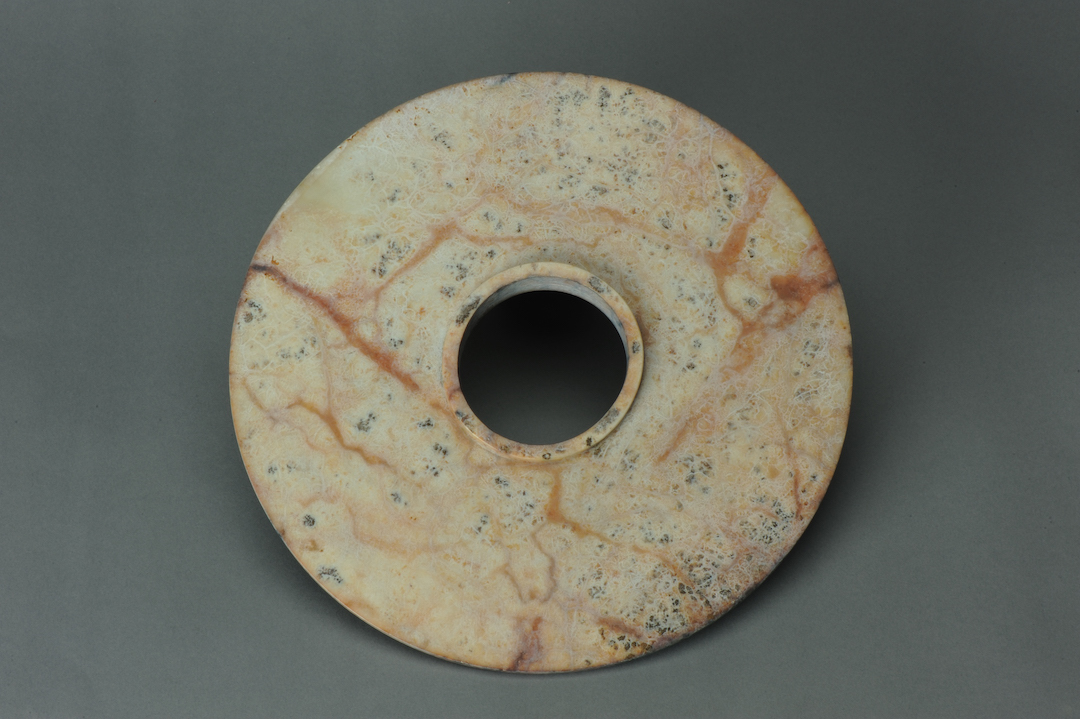
Collared jade, late Shang Dynasty - early Western Zhou Dynasty (13th century BC - 10th century BC), unearthed in 2001 at the Jinsha Site Sacrificial Area, Chengdu, Sichuan, collected by Chengdu Jinsha Site Museum
The device is huge in size and well-made. Due to the effect of light and soil, the two sides of the vessel showed different colors when it was unearthed. The sunny side was purple-blue and the negative side was light white. This phenomenon reflects the miraculous changes caused by the uneven distribution of mineral components in jade and the influence of the burial environment.
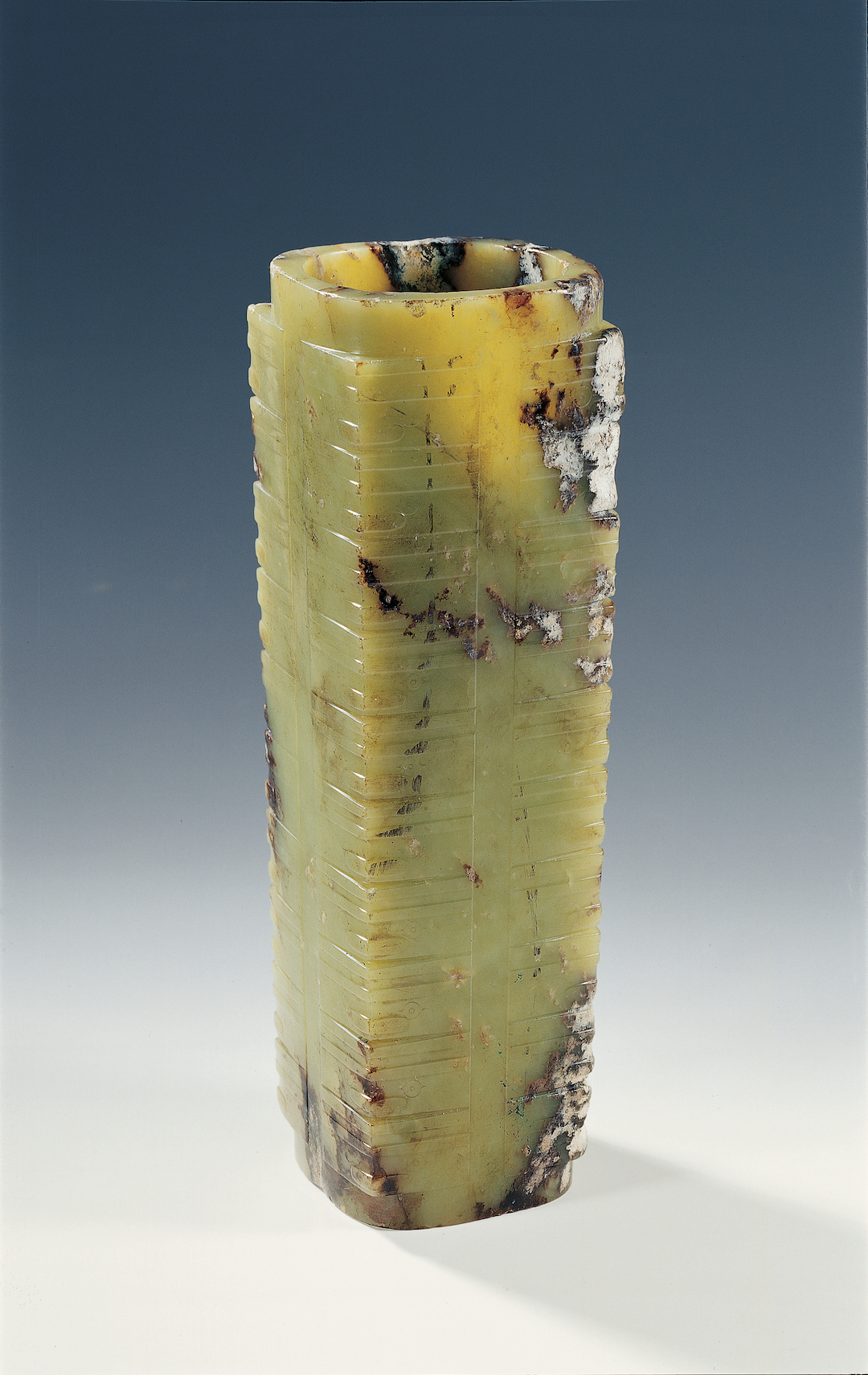
Ten-section Jade Cong, Liangzhu Culture (3300 BC - 2300 BC), unearthed in 2001 at the Jinsha Site Sacrificial Area, Chengdu, Sichuan, collected by Chengdu Jinsha Site Museum
The device is in the shape of a rectangular cylinder, square on the outside and round on the inside, large at the top and small at the bottom. There is a hole in the middle, from which the top and bottom shoot out. The whole vessel is divided into ten sections. Each section is engraved with a simplified human face pattern. The rectangular transverse ribs with incised fine parallel lines represent the feather crest. Two circles, one large and one small, are cut out with a pipe drill to represent the eyes and eyeballs respectively. The short rectangular rails have a geometric pattern resembling a cirrus pattern, representing the nose. A humanoid symbol is engraved on the upper part of the body. The humanoid wears a long crown on its head, holds its hands flat, has long flowing sleeves with feather-shaped decorations, and spreads its legs as if it is dancing. The inner wall of the hole is large at both ends and small in the middle, and is drilled on both sides. The inside and outside of the vessel are polished, the jade quality is smooth and smooth, and the production is very regular. This vessel is completely different from other jade congs unearthed at the Jinsha site in terms of material, workmanship, shape, and pattern. However, it is similar to jade congs from the late Liangzhu Culture in Zhejiang, indicating that the two places may have had exchanges and exchanges in an earlier period.
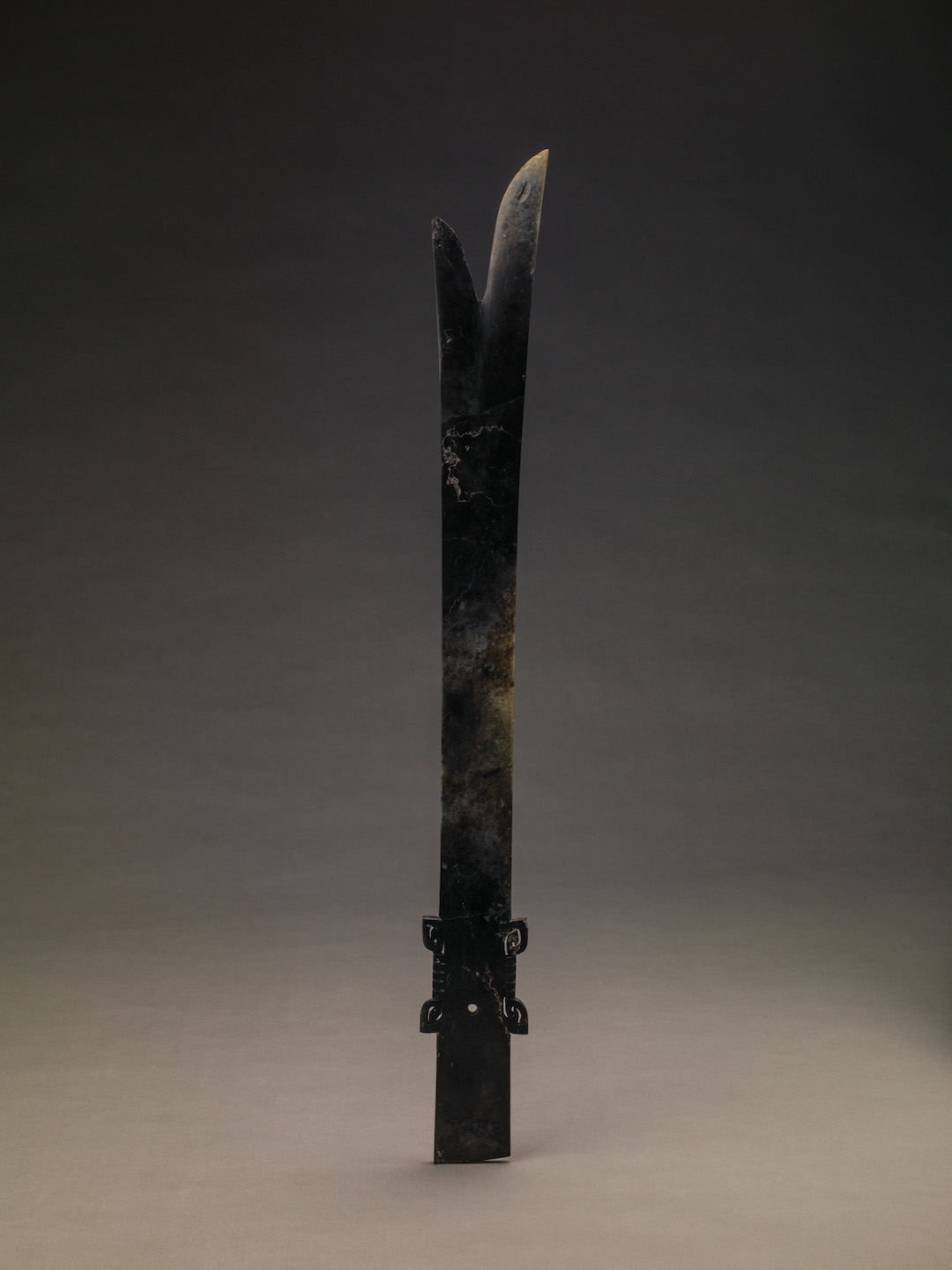
Jade Yazhang was unearthed from the No. 2 sacrificial pit at the Sanxingdui site in Guanghan, Sichuan in 1986 in the late Shang Dynasty (13th century BC - 1046 BC). Collection of the Sanxingdui Museum in Guanghan, Sichuan
Altered dolomite, black. Part of it turned white after being burned by fire and was broken into fragments. It was restored after splicing. The shape of the vessel is narrow and long, slightly thick, with a long ejector and a short base. The two sides are relatively flat and straight. The front part of the shot is slightly wider on both sides, and the front end is a fork-shaped blade. The fork is deep and the blade is sharp. On both sides of the arch, there are wide and inward curling cloud and thunder pattern tooth decorations on the upper and lower sides, with five teeth in the middle. There is a circular hole with a diameter of 0.7 cm between the ejector and the pedestal, and the tube is drilled. The two sides of the body are straight, the end is slightly wider, and the rear edge is obliquely wiped.

Bronze figure with high crown and standing hair, unearthed from the No. 3 sacrificial pit at the Sanxingdui site in Guanghan, Sichuan in 2021 in the late Shang Dynasty (13th century BC - 1046 BC). Collection of the Sichuan Provincial Institute of Cultural Relics and Archaeology
Only the head remains, and the overall shape of the vessel is unknown. He has a Chinese character face, thick eyebrows, triangular slanted eyes, a high nose, a large mouth, a square jaw, rectangular ears, small round holes in the earlobes, and a "U" shaped outline behind the head, so his hair style is "standing hair". Wearing a high crown, the crown beam is wider and goes around the head in a circle, with both sides of the forehead extending outward in the shape of a "ji". The crown body is higher and bent backward and downward. There are many grooves on the surface, which is related to the later generations. "Lunjin" is similar. A long column is connected under the chin, which seems to represent the neck of a human head. The end is in the shape of a pointed cone. It was supposed to be connected to other utensils. A column extends diagonally downward from the back of the head and is connected to the head.

Bronze figure of a kneeling figure with long hair, unearthed from the No. 4 sacrificial pit at the Sanxingdui site in Guanghan, Sichuan in 2021 during the late Shang Dynasty (13th century BC - 1046 BC). Collection of the Sichuan Provincial Institute of Cultural Relics and Archaeology
The figure is in a kneeling position, with the body tilted slightly to the left and front, and the head slightly chinted and twisted to the right side of the body. The copper bars representing the two strands of hair are roughly parallel and in the shape of opposite grooves with gaps in the middle. The hands are in a half-clasped palm position, held flat in front of the left side of the body. They are not completely closed, and there is a gap in the middle. The gap between the hands and the spacer, the gap between the hair and the flattened left shoulder together form a slot. Both knees are on the ground, the front soles of both feet are on the ground, and the back soles are raised. The center of gravity of the body is in the slot between the left shoulder and the palms of both hands, showing a strong sense of weight. The outer sides of the two calves are each decorated with a set of four feather patterns, and the two calves are each decorated with a feather crown pattern. This artifact is a brand-new discovery in Sanxingdui archaeology in terms of shape and decoration, and provides material for the study of Sanxingdui's bronze casting technology and art, religious beliefs and social systems, and cultural exchanges with surrounding areas.
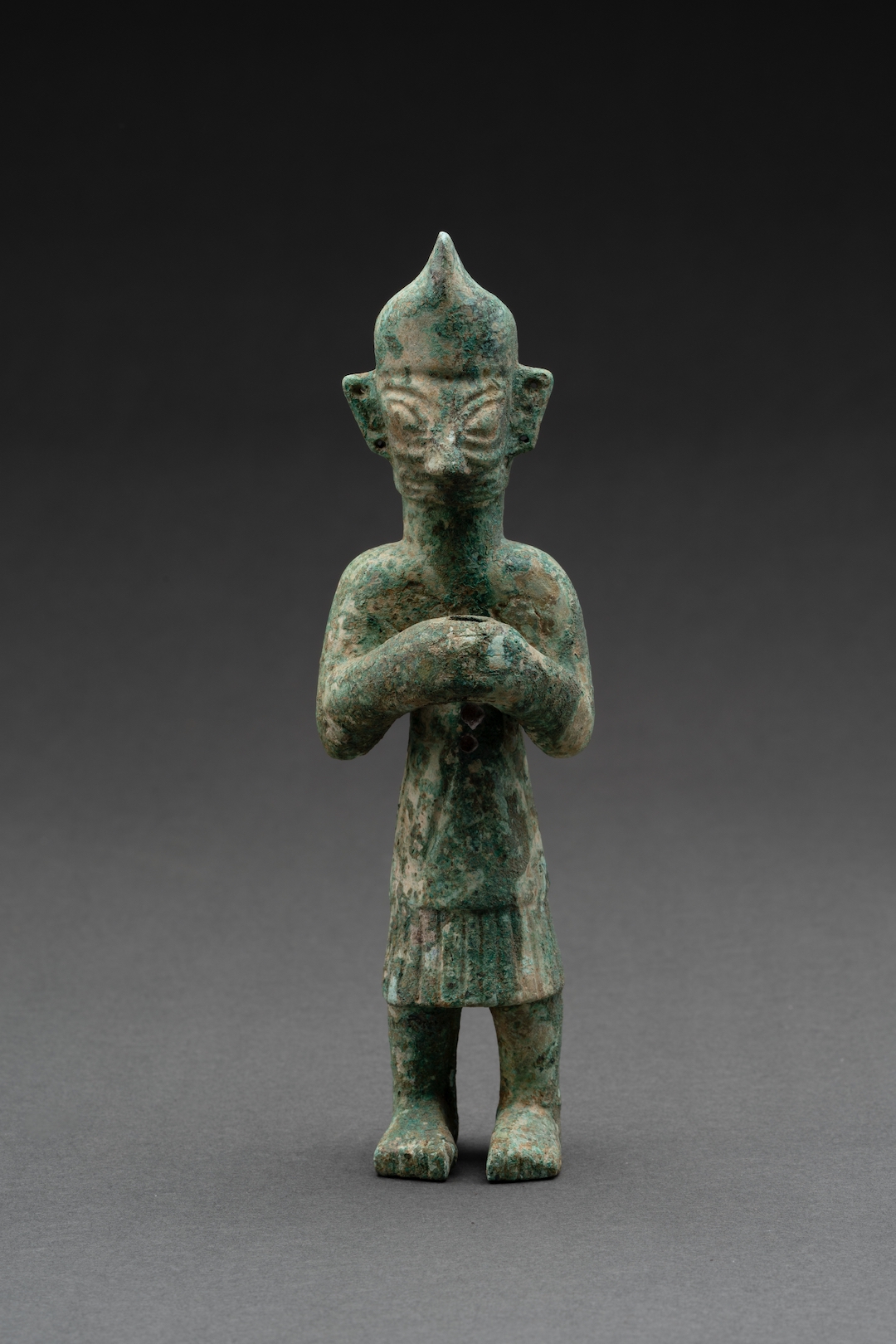
Bronze figure with a pointed hat, unearthed from Sacrificial Pit No. 8 at the Sanxingdui site in Guanghan, Sichuan in 2021, in the late Shang Dynasty (13th century BC - 1046 BC), collected by the Sichuan Provincial Institute of Cultural Relics and Archeology
It is well preserved, the overall shape is stable, and the proportions of all parts are roughly coordinated, except that the head and limbs are relatively large. Thick eyebrows, triangular slanted eyes, high nose, large mouth, the mouth is represented by two narrow grooves. The ears are rectangular, with three small round holes on each ear, and the middle hole is not transparent. Wearing a pointed ridge hat, the front end of the curved ridge is flush with the forehead, and there are holes on both sides of the middle for hairpins. It has a thick neck, narrow shoulders, and its arms are in a bow-like shape. The hands are held opposite each other, with the right hand outside and the left hand inside. There is a round hole in the middle, as if it should be holding something. The torso is erect, the feet are slightly apart, and the toes are visible. There is a hole in the sole of the foot, which is opposite to the hole on the inside of the ankle, and seems to be used for fixation. Wearing a long plain garment on the upper body, like a left lapel, with a belt tied around the waist and knotted in front of the abdomen. Wearing a short skirt on the lower body, the skirt reaches the knees. There are multiple vertical creases on the back of the top and skirt, like a pleated skirt.

Bronze tiger-headed dragon figure unearthed from Sacrificial Pit No. 8 at the Sanxingdui site in Guanghan, Sichuan in 2021 in the late Shang Dynasty (13th century BC - 1046 BC). Collection of the Sichuan Provincial Institute of Cultural Relics and Archaeology
There are two horns on the head, first upright and upward, and then curved and open upward. The horns are generally columnar and the tip is cone-shaped. The round eyes are bulging and painted in ink, located on both sides of the corners and heels. The animal's nose is slightly bulging upward, and the nostrils are clearly visible. There are round-pointed ears on both sides of the back of the head. The mouth is wide and slightly open, with two fangs and four incisors on the upper and lower sides. The lower fangs are larger and the incisors are square. There are canines on both sides of the back of the fangs, and four on each upper side. The size decreases from front to back. , there are two on each side, larger in front and smaller in back. It holds a copper strip-shaped streamer in its mouth. The streamer is bent backwards, with sharp ends at both ends, and two concave string patterns at the proximal end. It has a long neck, its forelimbs are supported on the base of the vessel, and its front paws have five toes, four in front and one in back. The lower part of the chest is folded upward, the hind limbs are in the air, and the two claws are combined. The hind claws have five toes, four in front and one in the back. The knee joints have sharp edges that symbolize joints, and the lower side of the abdomen is cross-wound and bound with copper wire for reinforcement. The base of the vessel is in the shape of a trident, with a high center in the shape of a mountain. There is a bird in each of the three corners. The bird has a crown on its head, round eyes, a wide flat beak, a long neck, a plump body, a hollow chest, and an inverted peach shape. Its wings are folded back, its tail feathers are connected to the ridge of the base, and it stands on two paws. On the seat, the claws seem to be webbed, which may be some kind of water bird. The head to the back are scaly feathers. The wings and tail feathers are decorated with concave string patterns, filled with red color, and most of them have fallen off. The bird in the front is well preserved, but the left and right sides have been broken and detached, and the right bird's tail is broken. The base is divided into two layers, with partially visible cracks and traces of ink painting. There are ivory residues and ivory beads attached to the base.
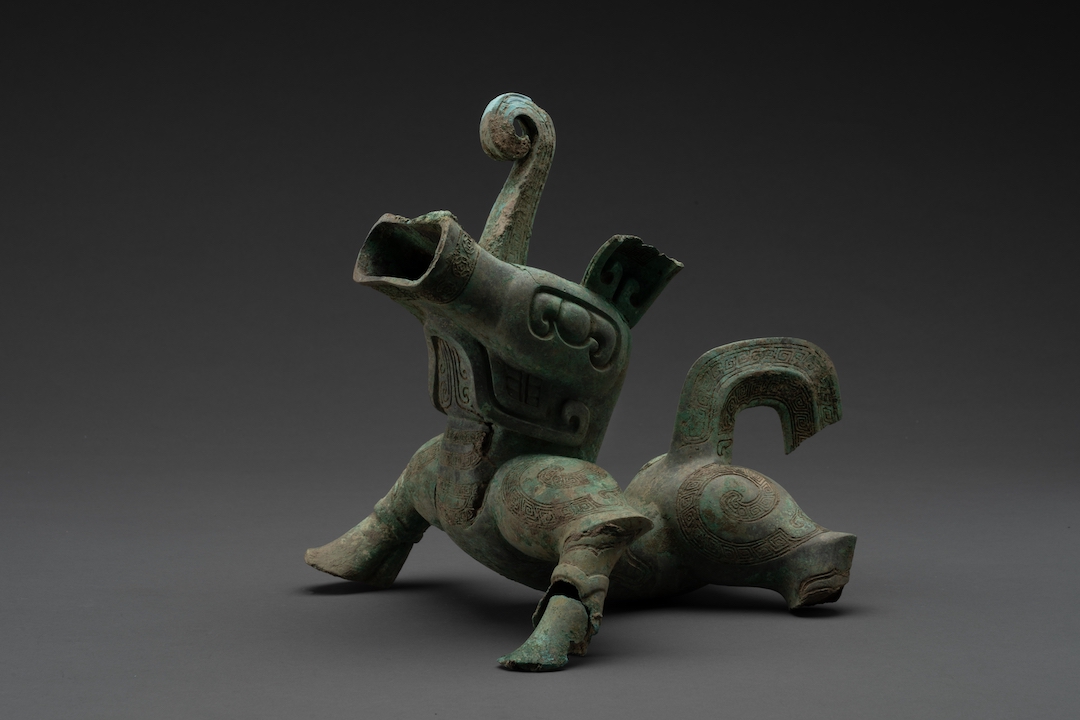
Bronze mythical beast unearthed from the No. 3 sacrificial pit at the Sanxingdui site in Guanghan, Sichuan in 2021 in the late Shang Dynasty (13th century BC - 1046 BC). Collection of the Sichuan Provincial Institute of Cultural Relics and Archeology
The copper mythical beast has a big head, with a flat, wide and hollow snout, slightly trumpet-shaped. The ears are erect, the right ear is missing, and the left ear is broken. There is a single horn in the middle of the head, which is taller and the end curls forward and inward, resembling an elephant trunk. The eyes are large, the corners of both eyes are hooked downward, the mouth shows square teeth, and the angle of the mandible is hooked upward. There are four hooves extending from the body to the left and right, the two hind hooves are broken from the middle down, the front hooves are relatively intact, and the left hoof is somewhat damaged. The limbs and elbows protrude backwards, the body is thin, and the tail grows upwards and then hangs downwards, breaking off in the middle. There is a circular pattern around the snout, and the patterns on the horns, ears, chest, limbs, and tail are all filled with cloud and thunder patterns. The chin and body have approximately triangular patterns, and the limbs below the elbows have "f" shaped patterns. The body of the mythical beast is hollow inside, and the fan soil can be seen. The limbs, horns, ears and body are presumably cast separately.
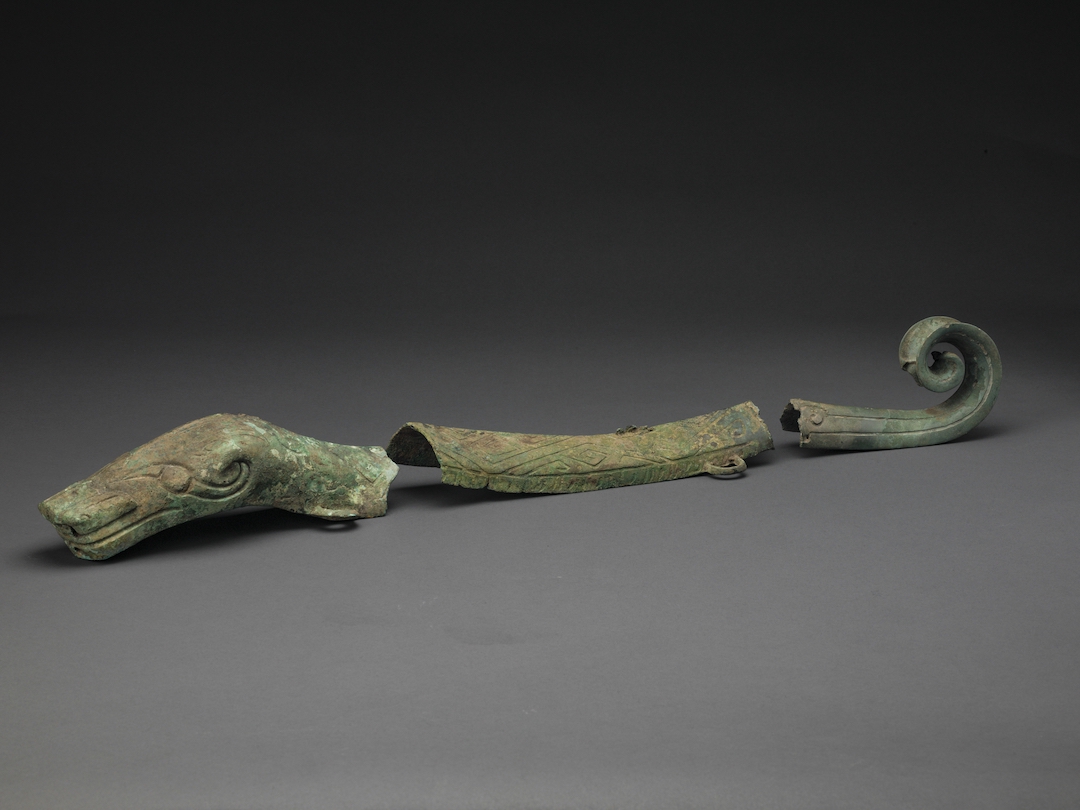
Bronze snake, late Shang Dynasty (13th century BC - 1046 BC), unearthed in 1986 from the No. 2 Sacrificial Pit of the Sanxingdui Site in Guanghan, Sichuan. Collection of the Sanxingdui Museum in Guanghan, Sichuan
The whole vessel is broken into three sections, one each for the head, body and tail. The body is in an "S" shape, the head is broad and slightly raised, there are ears on the head, long eyes, the eyeballs are round and convex, and there are two rings under the neck. The body is decorated with diamond-shaped cloud patterns, and there are rows of scales on both sides of the abdomen. The hollow knife-shaped wings on the top of the head and back and the ring on the right side of the neck fell off.
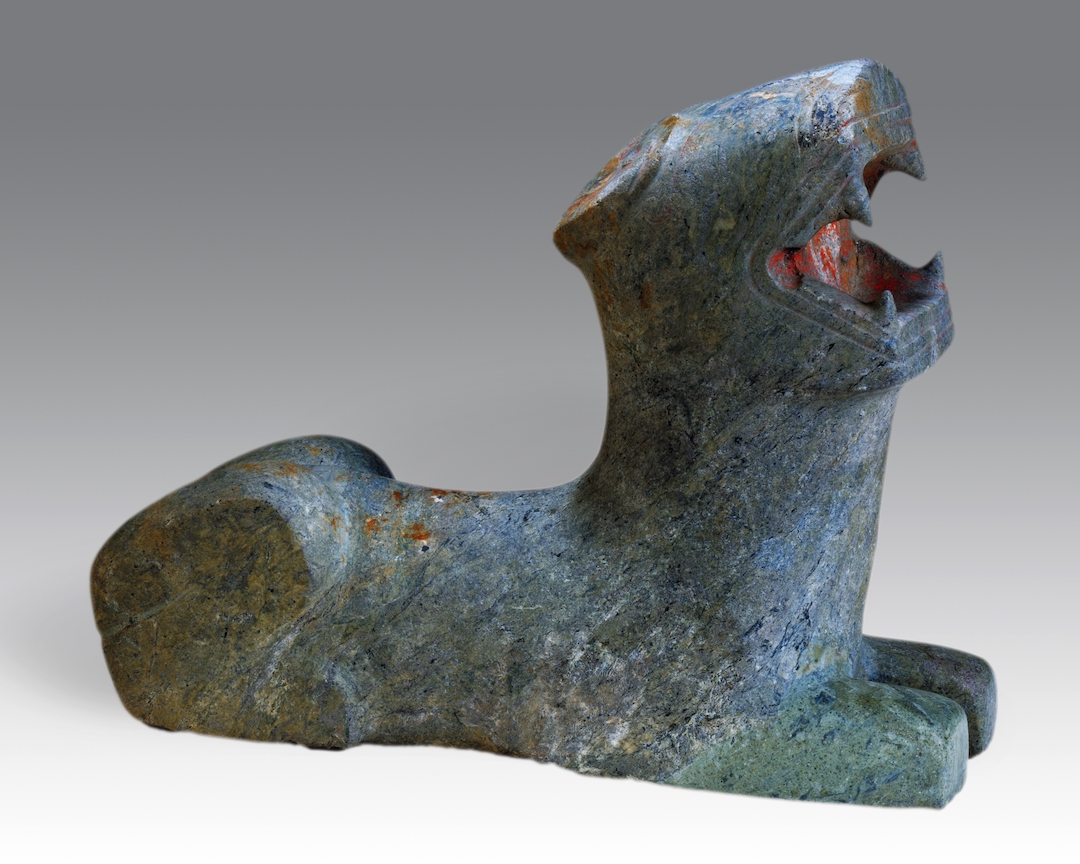
Stone Tiger, late Shang Dynasty - early Western Zhou Dynasty (13th century BC - 10th century BC), unearthed from the sacrificial area of Jinsha Site, Chengdu, Sichuan in 2001, collected by Chengdu Jinsha Site Museum
The tiger is in a lying position, with its neck straight and its head raised. The big mouth opens in the shape of an isosceles triangle, with a canine tooth on each corner and two incised lines around it to form the mouth frame. Curved rhombus-shaped eyes. The nose is straight, with five incised lines on both sides of the nose as beards. There are a large number of three-dimensional round sculptures of tigers in the sacrificial area of the Jinsha site, which fully shows that the ancient Shu people were also one of the tribes that worshiped tigers.
(This article is compiled based on relevant information from the Shanghai Museum)
